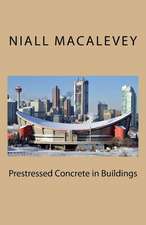Measuring Construction: Prices, Output and Productivity
Editat de Rick Best, Jim Meikleen Limba Engleză Paperback – 18 dec 2020
In response to this, Measuring Construction looks at fundamental economic theories and concepts with respect to the construction industry, and explains their merits and shortcomings, sometimes by looking at real life examples. Drawing on current research the contributors tackle:
- industry performance
- productivity measurement
- construction in national accounts
- comparing international construction costs and prices
- comparing international productivity
The scope of the book is international, using data and publications from four continents, and tackling head on the difficulties arising from measuring construction. By addressing problems that arise everywhere from individual project documentation, right up to national industrial accounts, this much-needed book can have an impact at every level of the industry. It is essential reading for postgraduate construction students and researchers, students of industrial economics, construction economists and policy-makers.
| Toate formatele și edițiile | Preț | Express |
|---|---|---|
| Paperback (1) | 436.14 lei 6-8 săpt. | |
| CRC Press – 18 dec 2020 | 436.14 lei 6-8 săpt. | |
| Hardback (1) | 1117.43 lei 6-8 săpt. | |
| CRC Press – 24 apr 2015 | 1117.43 lei 6-8 săpt. |
Preț: 436.14 lei
Nou
Puncte Express: 654
Preț estimativ în valută:
83.47€ • 86.82$ • 68.91£
83.47€ • 86.82$ • 68.91£
Carte tipărită la comandă
Livrare economică 14-28 aprilie
Preluare comenzi: 021 569.72.76
Specificații
ISBN-13: 9780367738341
ISBN-10: 0367738341
Pagini: 278
Dimensiuni: 156 x 234 x 15 mm
Greutate: 0.45 kg
Ediția:1
Editura: CRC Press
Colecția Routledge
Locul publicării:Boca Raton, United States
ISBN-10: 0367738341
Pagini: 278
Dimensiuni: 156 x 234 x 15 mm
Greutate: 0.45 kg
Ediția:1
Editura: CRC Press
Colecția Routledge
Locul publicării:Boca Raton, United States
Public țintă
Postgraduate and ProfessionalCuprins
1. Introduction: Setting the scene 2. Background to Purchasing Power Parity Indices 3. International construction cost comparisons 4. The International Comparison Program and purchasing power parities for construction 5. A Review of Construction Cost and Price Indices in Britain 6. Measuring and comparing construction activity internationally 7. Internationalization of the construction industry 8. Performance measures for construction 9. Refining the citiBLOC Index 10. A review of the theory and measurement techniques of productivity in the construction industry 11. Construction Productivity and Cost Estimation using Artificial Neural Networks 12. Determining levels of productivity in the construction industry using Data Envelopment Analysis 13. Endnote
Notă biografică
Rick Best is Associate Professor of Construction Management and Economics at Bond University. He has produced numerous book chapters and papers over a 20 year career as an academic as well as co-editing three books and co-authoring two quantity surveying textbooks. He was the founding director of the Centre for Comparative Construction Research. His research over the past ten years has been focused on the problems associated with making valid comparisons of construction industries across countries and has contributed to the development of the most recent construction data collection project within the International Comparison Program.
Jim Meikle has a part-time chair in construction economics at the Bartlett School of Construction and Project Management, University College, London (UCL). He also works as an independent consultant, having retired as a partner of Davis Langdon LLP in 2005. He has extensive experience in the management and implementation of construction, consultancy and research projects and programmes and has worked for private clients and government departments in the UK and other countries, and for international organisations. His interests include international comparisons, the structure and operation of construction industries and construction industry statistics. Jim is a non-executive director with Alexi Marmot Associates (AMA), a trustee of the Usable Buildings Trust and an adjunct professor at Bond University.
Jim Meikle has a part-time chair in construction economics at the Bartlett School of Construction and Project Management, University College, London (UCL). He also works as an independent consultant, having retired as a partner of Davis Langdon LLP in 2005. He has extensive experience in the management and implementation of construction, consultancy and research projects and programmes and has worked for private clients and government departments in the UK and other countries, and for international organisations. His interests include international comparisons, the structure and operation of construction industries and construction industry statistics. Jim is a non-executive director with Alexi Marmot Associates (AMA), a trustee of the Usable Buildings Trust and an adjunct professor at Bond University.
Recenzii
"In their endnote, the editors assert that "much that is written about construction prices, output, productivity and the rest is unreliable or plainly wrong". Their book is a helpful antidote. While offering more than a typical textbook for undergraduate courses, it should appeal to more than researchers in the field and deserves a broader readership." – Construction Economics and Building, Jan Bröchner, Chalmers University of Technology, Sweden
"The book is highly recommended for everyone, academics as well as practitioners, who engages in international price and cost comparisons and/or in performance benchmarking in construction." - Bernard Vogl (2015), Construction Management and Economics, 33:9, 775-777,
"The book is highly recommended for everyone, academics as well as practitioners, who engages in international price and cost comparisons and/or in performance benchmarking in construction." - Bernard Vogl (2015), Construction Management and Economics, 33:9, 775-777,
Descriere
Explores fundamental economic theories and concepts with respect to the construction industry, and explains how to avoid pitfalls by looking at real life examples.




















